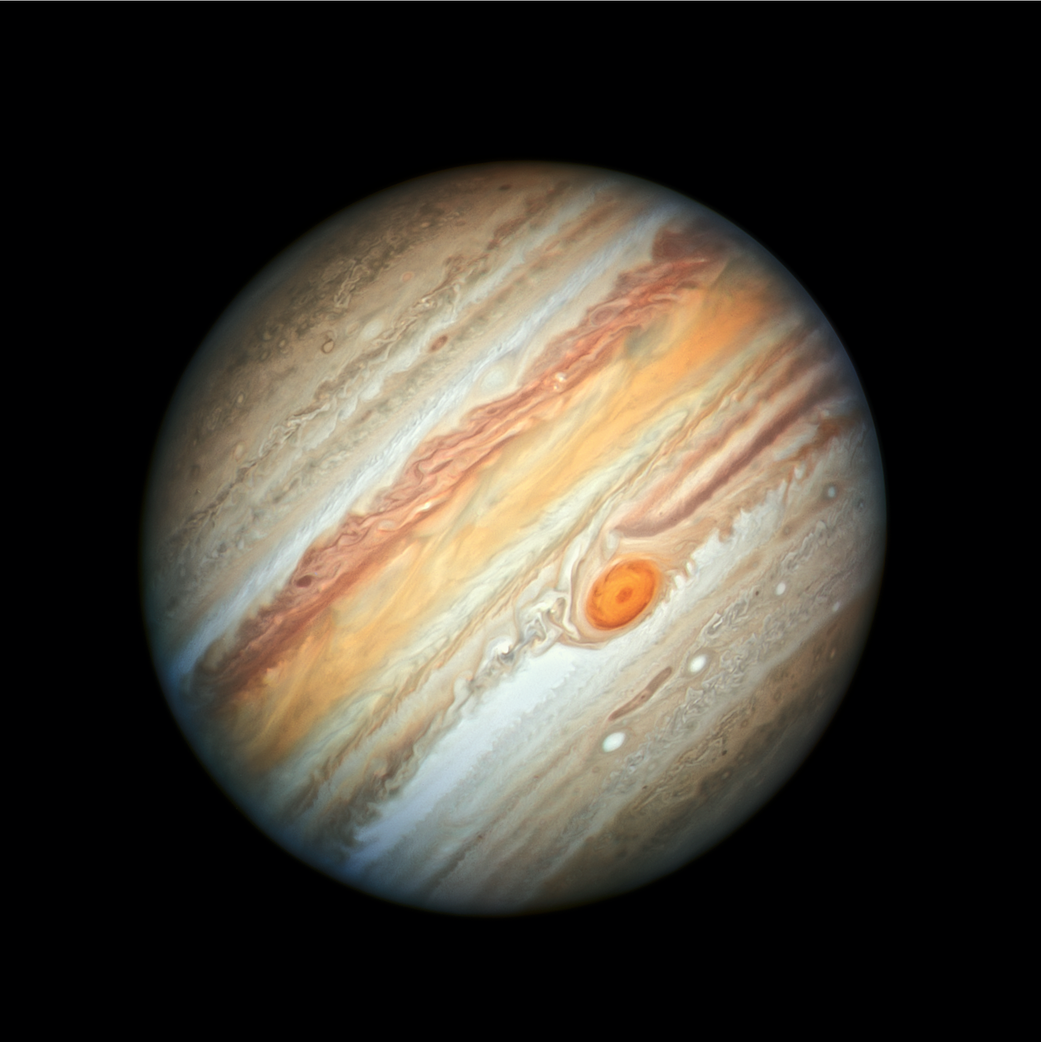This new Hubble Space Telescope view of Jupiter, taken on June 27, 2019, reveals the giant planet’s trademark Great Red Spot, and a more intense color palette in the clouds swirling in Jupiter’s turbulent atmosphere than seen in previous years. The colors, and their changes, provide important clues to ongoing processes in Jupiter’s atmosphere.
The bands are created by differences in the thickness and height of the ammonia ice clouds. The colorful bands, which flow in opposite directions at various latitudes, result from different atmospheric pressures. Lighter bands rise higher and have thicker clouds than the darker bands.
The new image was taken in visible light as part of the Outer Planets Atmospheres Legacy program, or OPAL. The program provides yearly Hubble global views of the outer planets to look for changes in their storms, winds and clouds. Hubble’s Wide Field Camera 3 observed Jupiter when the planet was 400 million miles from Earth, when Jupiter was near “opposition” or almost directly opposite the Sun in the sky.
Image Credit: NASA, ESA, A. Simon (Goddard Space Flight Center) and M.H. Wong (University of California, Berkeley)
哈勃太空望远镜于2019年6月27日拍摄了一张木星的新照片,揭示了这颗巨行星标志性的大红斑,以及在木星湍流大气中旋转的云层中比前几年看到的更强烈的色调。这些颜色及其变化,为木星大气中正在进行的过程提供了重要线索。
这些条纹是由氨冰云的厚度和高度的差异造成的。这些在不同纬度向相反方向流动的彩色带是由不同的大气压造成的。较亮的云带比较暗的云带上升得更高,云更厚。
这张新照片是在可见光下拍摄的,作为外行星大气遗产计划(OPAL)的一部分。该项目每年提供哈勃太空望远镜对外行星的全球观测,以寻找它们的风暴、风和云的变化。哈勃的广域相机3号在木星距离地球4亿英里的时候拍摄到了它,当时木星正处于“木星冲日”位置,或者几乎与天空中的太阳正对。
图片来源:NASA, ESA, A.Simon(戈达德太空飞行中心)和M.H.Wong(加州大学伯克利分校)







